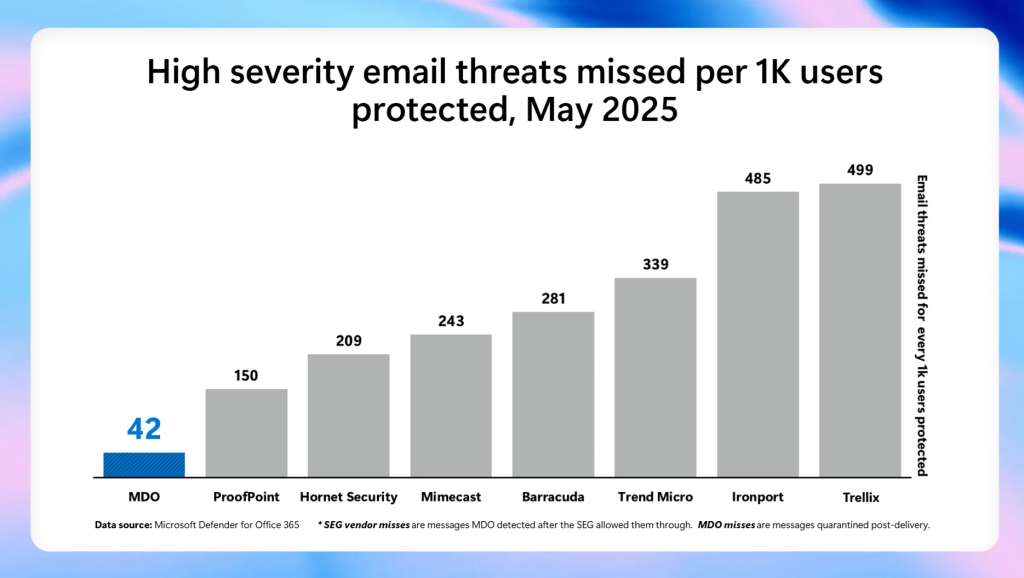Microsoft announced two major transparency initiatives aimed at providing customers with comprehensive data on email security effectiveness, addressing the critical need for standardized measurement in cybersecurity solutions.
The tech giant is launching a new customer-facing dashboard and releasing comparative benchmarking reports to help chief information security officers (CISOs) and security architects make data-driven decisions in an increasingly complex threat landscape.
New Dashboard Provides Real-Time Threat Visibility
The newly released Defender for Office 365 overview dashboard offers security teams unprecedented visibility into threat protection across their organizations.
This comprehensive tool tracks efficacy across multiple threat vectors, including cyberthreats blocked pre-delivery, threats mitigated post-delivery, and even “missed” threats that slip through initial defenses.
The dashboard provides detailed insights into how Microsoft Defender for Office 365 capabilities like Safe Link, Safe Attachments, and Zero-hour Auto Purge contribute to organizational threat protection.
Security teams can now confidently answer the critical question: “How are my organization’s users being protected from malicious content and cyberattacks when using email and other collaboration surfaces like Microsoft Teams?” The dashboard represents a significant advancement in email security transparency, moving beyond traditional assumptions about effectiveness to provide real-time, actionable data.
Benchmarking Results Show Competitive Advantage
Microsoft’s benchmarking research utilized real email threats observed in the Microsoft ecosystem rather than synthetic tests, providing objective comparisons at scale.
The company analyzed two distinct security architectures: Secure Email Gateways (SEGs) that filter emails before reaching Microsoft Defender for Office 365, and Integrated Cloud Email Security (ICES) vendors that detect and remediate threats after Microsoft’s solution.
The SEG benchmark analyzed seven vendors using aggregated threat signals, normalizing results per 1,000 protected users to measure missed threats.
Results showed that Microsoft Defender for Office 365 missed the fewest threats when compared to competitor solutions.
For ICES vendors, which utilize the Microsoft Graph API to move emails to folders such as junk, promotional, or deleted items, the analysis revealed an average improvement of 20% in detecting promotional or bulk email when combined with Defender for Office 365.

Industry Validation and Future Roadmap
SE Labs, recognized experts in email security testing, independently reviewed Microsoft’s benchmarking methodology to ensure quality standards.
Simon Edwards, SE Labs’ CEO, emphasized that while traditional comparative tests with synthetic threats allow targeted testing, real-world data exposes how products perform against the full spectrum of daily threats.
Microsoft plans to provide quarterly updates for these benchmarks and will continue refining its approach based on ecosystem feedback.
This transparency initiative represents a significant step toward empowering customers with reliable tools and actionable data to evaluate security efficacy and maintain organizational protection against evolving cyber threats.
Find this Story Interesting! Follow us on Google News, LinkedIn, and X to Get More Instant updates